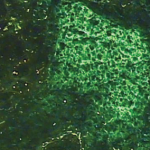Criteria History & Development
Eleven classification/diagnostic criteria for SS were published between 1965 and 2002, but they were not endorsed by the ACR or EULAR; the AECG criteria have been the most commonly used classification criteria over the past decade. The ACR Classification Criteria for Sjögren’s Syndrome: A Data-Driven, Expert Consensus Approach in the Sjögren’s International Collaborative Clinical Alliance Cohort was considered a significant step forward when published in 2012, with criteria designed for classifying individuals for enrollment in clinical trials. The criteria were developed using the National Institutes of Health-funded Sjögren’s International Collaborative Clinical Alliance (SICCA) registry, and were based on the need for specificity rather than a reliance on symptoms for a diagnosis, such as dry eyes and dry mouth, which can be nonspecific and caused by other conditions. In the 2012 document, the classification criteria of SS required that a patient have at least two of the following objective features:
- Positive serum anti-SSA and/or anti-SSB or (positive rheumatoid factor and antinuclear antibodies ≥1:320);
- Ocular staining score ≥3; and
- Labial salivary gland biopsy exhibiting focal lymphocytic sialadenitis with a focus score of ≥1 foci/4 mm2.
Analyses were subsequently performed in a cohort of patients at the Oklahoma Medical Research Foundation that compared the ACR and AECG criteria. Those analyses found a high level of agreement. Investigators from both the SICCA team and the EULAR Sjögren’s Task Force formed the International Sjögren’s Syndrome Criteria Working Group in 2012, with the primary purpose of developing classification criteria for primary SS that combined features of the ACR and AECG criteria. The 2016 document is the result of that work.
The Time Is Right
The focus on primary SS is consistent with the working group’s goal of producing criteria that will aid in recruitment of patients for clinical trials. The landscape of SS has changed in recent years due to both the recently validated disease activity indices and the availability of new therapeutic agents, Dr. Shiboski says. “The publication of a single set of classification criteria for SS that has the buy-in of the international SS scientific community and has been approved by ACR and EULAR is extremely timely. The pharmaceutical industry has a number of new therapeutic agents waiting to be tested in clinical trials. Further, a universal set of criteria will greatly improve comparison of results across clinical studies. The new criteria set is also in keeping with ACR and EULAR objectives of elaborating and actively promoting, disseminating and implementing ACR and EULAR recommendations and criteria for the most common rheumatic and musculoskeletal diseases.”


